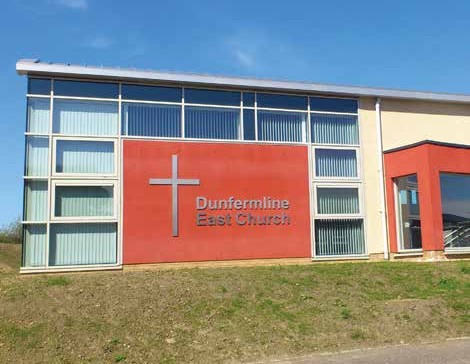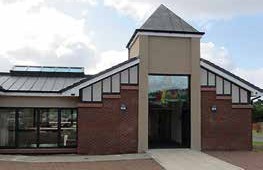New Charge Developments – where are they now?
Back in the early days of the millennium the Church of Scotland established the concept of ‘New Charge Development’ churches. Thomas Baldwin considers their journey – and successes.
SUNDAY May 7 was a milestone in the story of the New Charge Developments (NCDs), the term for new, explicitly missional church planting which the Church of Scotland introduced in the year 2000.
That day marked the celebration of Dunfermline East Church of its elevation to full status. In less than 15 years the church has established itself in a smart new building, incorporating a soft play area and café, which is so heavily used they already have plans to expand.
The minister since 2010 is the Rev Andrew Morrice, who told the Church of Scotland website: “We don’t aim to attract new members as such. We find that the current generation is reluctant to commit to membership in the way in which perhaps older generations do.
“We are just seeking to grow as disciples of Jesus Christ ourselves, taking our relationship with Him seriously in our lives and taking every opportunity to share our faith with friends, family and neighbours. We see a number of people coming to real faith through coming along, perhaps through friends, to church or to groups within the church and then to church or to Alpha or Christianity Explored courses.”
It’s a far cry from 2003, when the church consisted of a minister, the Rev Alan Childs, with a small group in a manse in Dunfermline’s then embryonic eastern expansion.
The Rev Peter Neilson was at the time Mission Development Facilitator with the Board of National Mission, and responsible for overseeing the NCDs. He says now: “I remember picking up Alan at Inverkeithing Station and taking him to his house. There were no public buildings at all in that part of Dunfermline, no school, no community hall; and the only space he could create was to have his garage converted into a space for a mother and toddler group.
“They have done an extraordinary job there, but it’s been a very long hard slog – anyone who thinks starting from scratch is going to be easier than working with what you have got is wrong. It’s very energy-sapping.”
Mr Neilson says that the language of NCD, which was borrowed from the Presbyterian Church (USA)’s ‘New Church Development’ programme, was meant to express a new approach to planting new churches.
“There was a language of church extension, which carried with it the assumption that we were extending the kind of church we had elsewhere. The language of church planting is that we may find a different kind of plant grows in that environment.
“NCD was creating a freedom from some of the expectations of what a church would look like – in terms of leadership, worship, patterns of ministry and mission – and saying ‘go and do what’s needed in that place at this time with the people you have got’.”
What that has resulted in has varied hugely across the various new charge projects. Of 14 churches which have begun the full NCD process since the legislation was introduced, nine are now full charge, three are still NCDs, one was dissolved and one absorbed into a new linkage.
Not all have their own building, or seriously aspire to one. One example is Aberdeen: Stockethill, which replaced a dissolved parish church based in a 1940s housing development.
Their minister, the Rev Ian Aitken, has also been there from the beginning, and he admits the reality hasn’t quite met up to his initial expectations. “When we started there were four of us. It was my first charge and I thought we were going to be huge, we were going to do amazing things, we were going to have a large church with lots of people working in it and all sorts of stuff happening around it.
“What has developed is a much simpler style of church, very rooted in its community and very accessible to all people. It’s definitely very different from what I pictured, but that’s because we asked fundamental questions about what church is and listened for the answers.
“We are a church without a building, and remain so, without any prospect of getting one. So we use community facilities. And it’s been extremely positive: we have seen the congregation grow, and we also have two other congregations based around sheltered housing units.
“One of our focuses has been to try and develop a variety of congregations, and styles and places of worship. And we are still trying to develop that, so it’s positive but we are still an experiment.”
He describes going to full status, in 2013, as a ‘significant step’: “One of the things I said was that there is a parish church rooted in this community here, and there wouldn’t be if it wasn’t for the New Charge.”
The latest to move to full status is Glasgow Robroyston, set up in the late 1990s to cater to new housing to the north east of the city, which took the step in June.
Like Dunfermline East, when Robroyston was first formed there was very little community space in the area; so for them getting their own building was a crucial step. In 2003 they bought and converted a grocery store in 2003, and 10 years later built a big extension.

Dunfermline East Church, shortly after its opening
The minister since 2009 is the Rev Jonathan Keefe. He says: “The Church of Scotland has been very helpful on a practical level, we have had a great Commission (the group of local elders who support the NCD) who have been very supportive – and are quite delighted about being ‘made redundant’ now! That, plus the previous ministers created great foundations for us to build upon.”
Jonathan says the church has grown, not in spectacular numbers but steadily over the years – and including the young families and children that the Church of Scotland as a whole is struggling to reach. “There has always been a drip effect – the membership is growing, a few every year.”
Inverness St Columba’s is one of the three churches still classified as NCD – although that reflects the fact that it only started in 2010. They have identified a site for a building and are currently in the planning and fundraising phases.
Their minister, the Rev Scott McRoberts, says: “There are 1000 homes about to be built in the area, and we are hoping to be there as they are built, to be ‘in with the bricks’.”

Glasgow Robroyston entrance

Glass above front door
He describes his time in Inverness as ‘a really great experience of growth’: “We started with around 30 people and now we have 70-80 on a usual Sunday. So we have seen numerical growth, and as well as that we have seen people coming to faith.”
Oversight from the church offices for NCDs now rests with the Rev Angus Mathieson, partnership development secretary within the Ministries Council.
While warning that the Church doesn’t have the resources or manpower to plant a church everywhere it would like to, Angus says that there is still a place for NCD within the church and there are currently conversations about starting two new ones: one in Moray, and one with ecumenical partners in Livingston.
He says that NCDs are about recognising that one size doesn’t fit all: “It’s finding where God is working and engaging with that, creating space and opportunities for it to happen.”